Do you ever ask yourself why your fish in the aquarium appear to be tired or stressed? It could be as a result of water which is stagnant. And this is where a DC wavemaker pump makes the difference. But, to begin with, what is a DC wavemaker pump, and why does every aquarium require it?
Content Table
This is a complete guide on the DC wavemaker pumps where we will discuss the uses, and compare AC and DC wavemaker pumps to get the differences between them, and why it is vital for many aquaria.
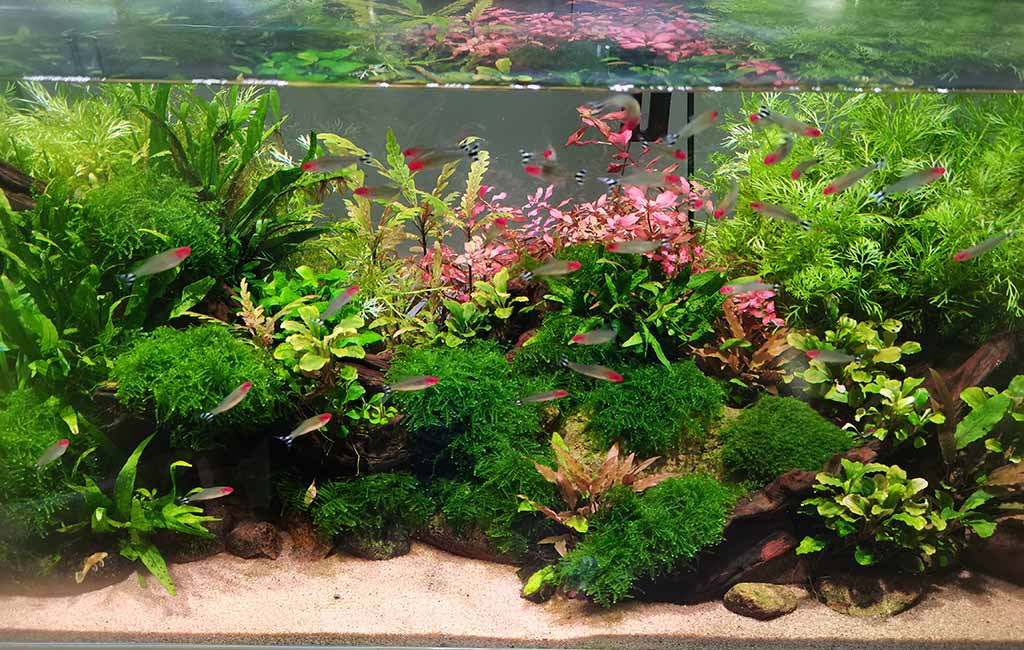
What is a DC Wavemaker Pump
A DC wavemaker pump is equipment integrated into the aquarium environment to provide analogs to wave and current.
The term DC stands for Direct Current, which indicates the type of current that is used to power the pump. Some of the main differences between conventional AC pumps and DC pumps include; DC pumps provide quieter performance, are more efficient, and are more likely to endure for longer duration.
These pumps are used to generate a lively and authentic environment in water for fish, and other sea creatures. Through their operation, they increase water movement, oxygenation, and nutrient dispersion across the tanks within the aquarium. It helps preserve the good health of the ecosystem and encourages the growth of bacterial flora.
Why are DC Pumps Quieter
A pump that uses Direct Currents is a DC pump that is usually said to be quieter compared to AC types because of the working mechanisms. AC motors vibrate and make more noise as compared to DC motors since they contain an alternating current that triggers mechanical vibrations.
Moreover, DC pumps commonly have noise control mechanisms in place which include rubber isolation or sound absorption parts to reduce noise even further. These have a way of avoiding much disturbance and noise to the fish and the people owning the aquarium at home.
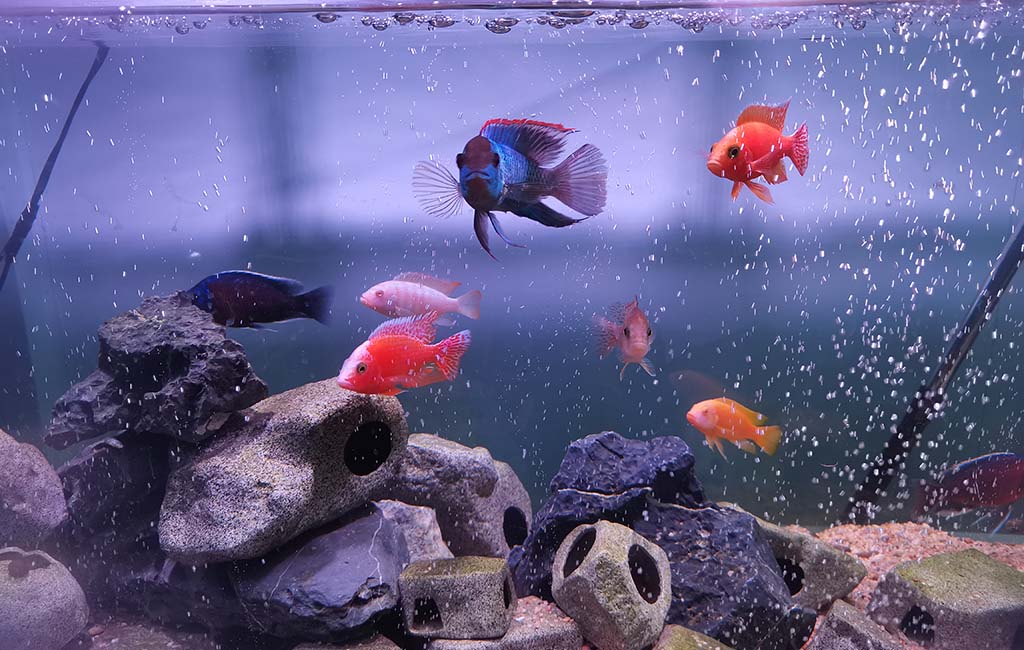
Why use a DC Wavemaker Pump
It is most helpful when used on tanks that aim to mimic the natural ocean environment, such as reef tanks with saltwater and large tanks with fresh water. These pumps are of great value in providing a live and vibrant environment to the aquatic environment by.
- Simulating Natural Currents: By generating horizontal water flow, DC wavemaker pumps mimic the natural currents found in oceans and rivers.
This helps to prevent stagnant water and promotes the movement of nutrients and oxygen throughout the aquarium. - Enhancing Water Circulation: Strong water circulation is essential for maintaining a healthy aquarium environment. DC wavemaker pumps help to distribute heat, especially from aquarium heaters, oxygen, and nutrients evenly, preventing the formation of dead spots and reducing the risk of algae growth.
- Promoting Fish Health: The dynamic water flow created by DC wavemaker pumps encourages fish to swim and exercise more, promoting their overall health and well-being. It also helps to prevent fish from becoming lethargic or developing health problems associated with poor water quality.
- Creating a More Visually Appealing Aquarium: The movement of water created by DC wavemaker pumps adds a dynamic and visually appealing element to the aquarium, making it more enjoyable to watch and interact with.
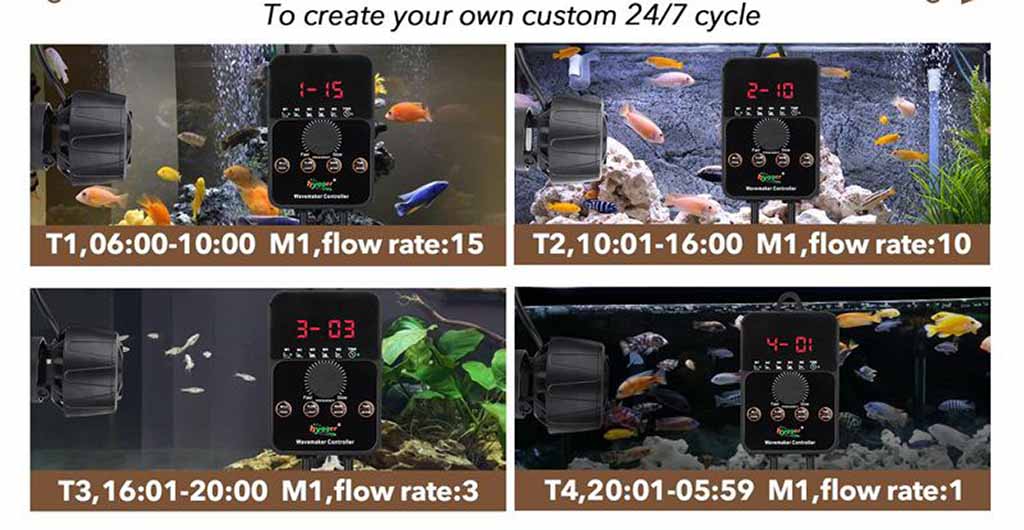
Create wave in tanks
The Difference Between AC and DC Pumps
AC (Alternating Current) pumps and DC (Direct Current) pumps are both commonly used in aquariums. While they serve the same purpose of creating water flow, they differ in their operating principles and characteristics.
Key Differences
Power Source
AC pumps work using AC, which is the most common electric supply across homes and commercial facilities. This means that they can be inserted into a normal slot on the wall directly. DC pumps, in contrast, use direct current. This has to be transformed to DC power to be used by the pump, and this needs a power supply or inverter.
Noise
AC pumps, on the other hand, tend to be noisier than DC pumps because of their structure and how they work. Compared to DC motors, AC motors are considered to cause higher levels of vibration and noise due to the mechanical vibrations originating from the current flow. Moreover, for the noise control aspect, DC pumps may have rubber mounts or sound absorbers which reduces its noise level even lower.
Efficiency
DC pumps are considered sometimes more efficient than AC pumps. This is because generally, the energy conversion rate of electrical energy to mechanical energy in DC motors is higher. This indicates that for the same flow rate, DC pumps can consume less energy as compared to AC pumps.
Control
DC pumps generally often provide finer control of water flow and velocity compared to AC pumps. This is because DC motors can be more easily regulated using electronic circuits. This makes the DC pumps suitable for special occasion aquariums that may require certain water flow patterns or mimicking of the natural currents of the sea.
Cost
However, despite these similarities, DC pumps can be more expensive than AC pumps in terms of the initial investment. This is because DC pumps can be complicated by other parts, such as power supply or inverter, which is not easily solvable by small adjustments. However, in the long run, they can be cheaper because of their efficiency in energy consumption and lower maintenance costs. It is always possible to recoup the extra cost of purchasing such equipment through energy savings over some time.
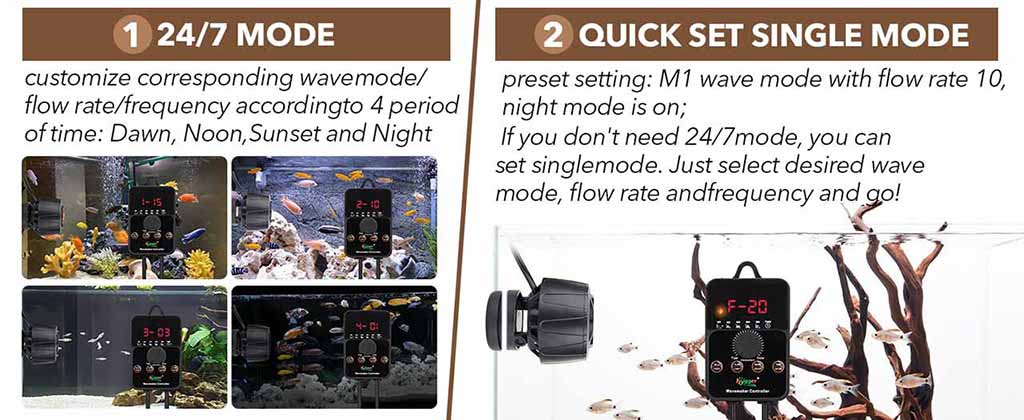
Choosing the Right Pump
When selecting a wavemaker pump for your aquarium, consider the following factors:
- Aquarium Size: Larger aquariums may require more powerful pumps to ensure adequate water circulation.
- Water Volume: The volume of water in your aquarium will influence the pump’s capacity and flow rate.
- Desired Water Flow: Determine the strength and pattern of water flow needed for your specific needs.
- Noise Sensitivity: If noise is a concern, a DC pump might be a better choice.
- Budget: Consider your budget and the long-term costs associated with each type of pump.
Parting Thoughts
A DC wavemaker pump is a worthwhile purchase for any aquarist interested in maintaining a balanced and thriving aquatic ecosystem. Some benefits include the ability to mimic natural ocean currents, improve water circulation, and improve fish health.
While choosing the DC wavemaker pump, it is essential to bear in mind the size of the aquarium, the volume of water, the level of water circulation, the noise level, and the cost. After selecting your wave pump, you can rest assured that your aquarium will continue to be a thriving environment for years to come.
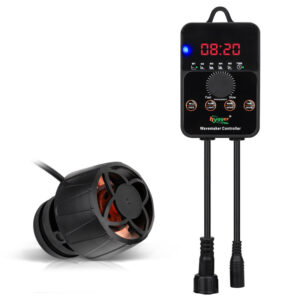
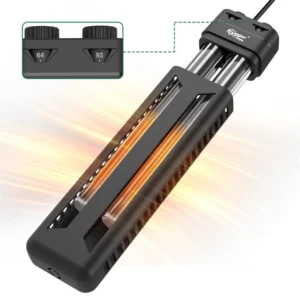
Leave a comment